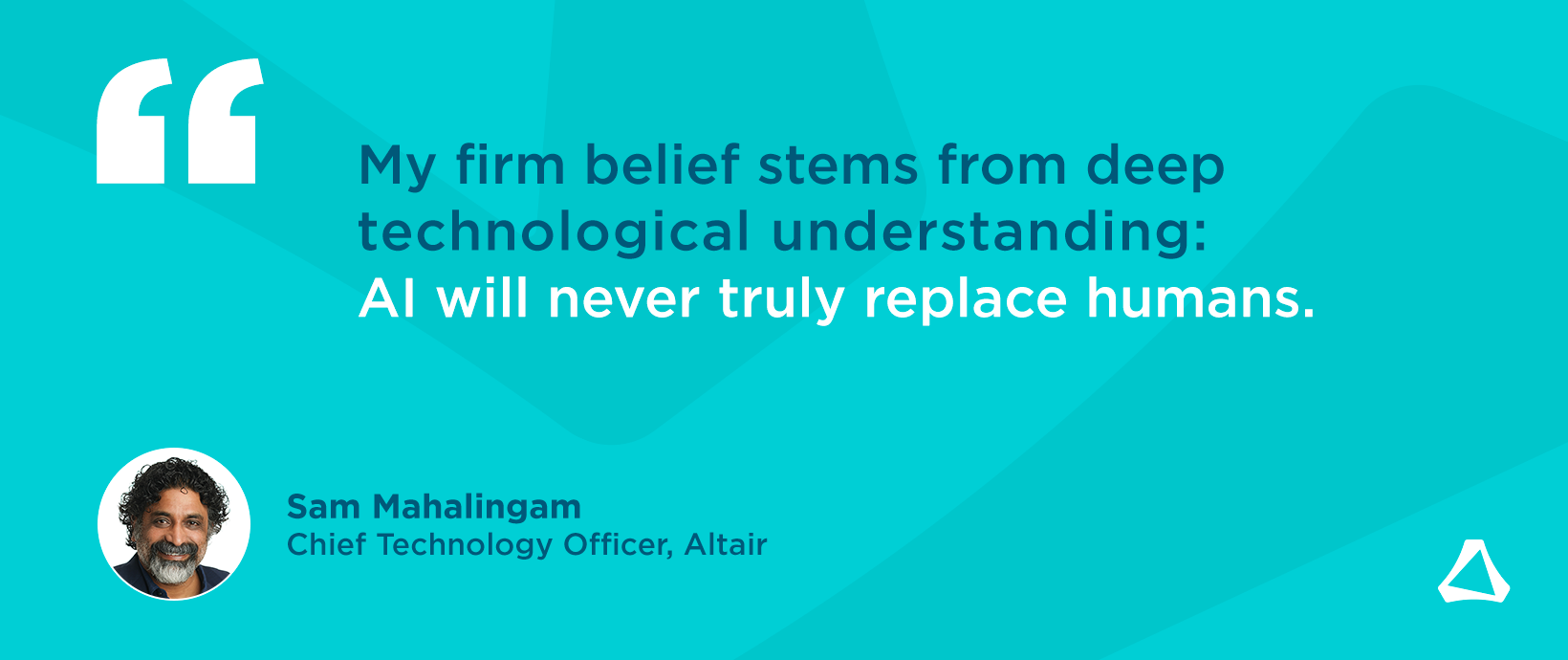Thought Leader Thursday: Become More Productive by doing your Analysis with OptiStruct instead of Nastran
OptiStruct® can use standard Nastran input decks. That’s a great place to start increasing your productivity – but there is so much more.
A little over twenty years ago I joined Altair in Germany. At the time in sunny California a small team of software developers restarted the development of OptiStruct pretty much from scratch. An early decision that proved very valuable in the long run was to adopt Nastran input format. After a few years of working in Germany using OptiStruct’s powerful topology optimization in our consulting practice, I really wanted to be part of this creative team. I moved to the US, first Michigan and then California. Optimization was a powerful driver. We wanted to change how things are designed and many people have adopted OptiStruct for that. And to do optimization efficiently you need… a powerful finite element solver. Right! Solving is only one step in an optimization process and as such encapsulated within the software.
As much as the team put energy into the optimization technology, the analysis capabilities ever expanded. Linear statics and normal modes first; to get into aerospace, we needed buckling, then contact and so on. Today, the analysis capabilities of OptiStruct include a wide spectrum from linear to nonlinear implicit statics and dynamics. It has evolved to be the leading vibration solution – NVH as it’s called in the auto industry. All technology has been developed by Altair. Some external libraries are employed as technology gets democratized. Many small and medium companies as well as some not so small companies like automotive OEMs have made OptiStruct their main finite element analysis software replacing Nastran.
Transition from Nastran is quite easy. Most traditional solutions of Nastran are covered and the solver input deck of OptiStruct uses the same text format. Nastran decks mostly run directly without modification in OptiStruct. Also on the result output OptiStruct writes the OP2 and Punch format that are widely adopted in simulation processes. As such it is very easy to switch from Nastran to OptiStruct. The typical process from model to results stays largely unchanged. Training effort is minimal.
Of course OptiStruct is not merely a copycat. We live in a competitive environment and innovation is key. Developers are keen to contribute to technology development. Solutions like afore mentioned NVH or the non-linear implicit sequences have seen a tremendous amount of development and now surpass Nastran and other competitive solutions. Once people take the first step running their Nastran decks in OptiStruct there is much to discover in additional power. Technology like distributed memory parallelization have been driven to great performance.
View article on OptiStruct benchmark performance by Digital (Desktop) EngineeringAfter an analysis you want to find out how to change your design to get to your performance targets. As optimization is at the core of OptiStruct, this step is easy as well. Define some design variables and your targets as an optimization problem. Originally developed as optimization software, optimization is still at the core of the technology. Many new responses have been added together with new solution sequences. OptiStruct can solve a variety of multi-physics or multi-disciplinary design problem. In addition to finite element implicit analysis types, explicit finite elements as well as multi-body models can be analyzed simultaneously.
For a complimentary trial, visit www.altair.com/optistruct



